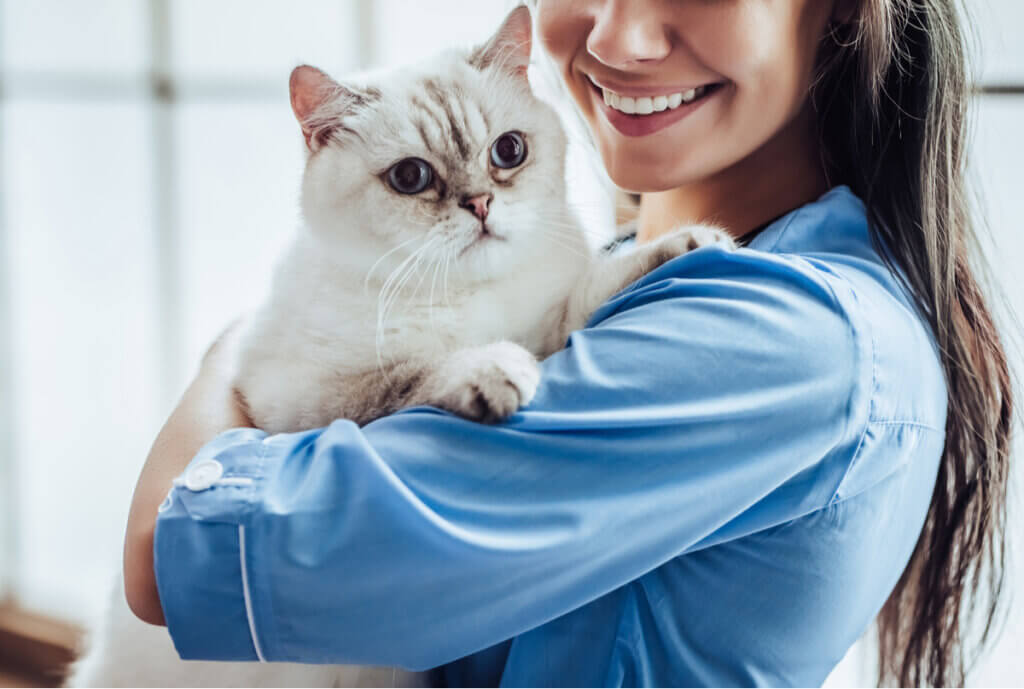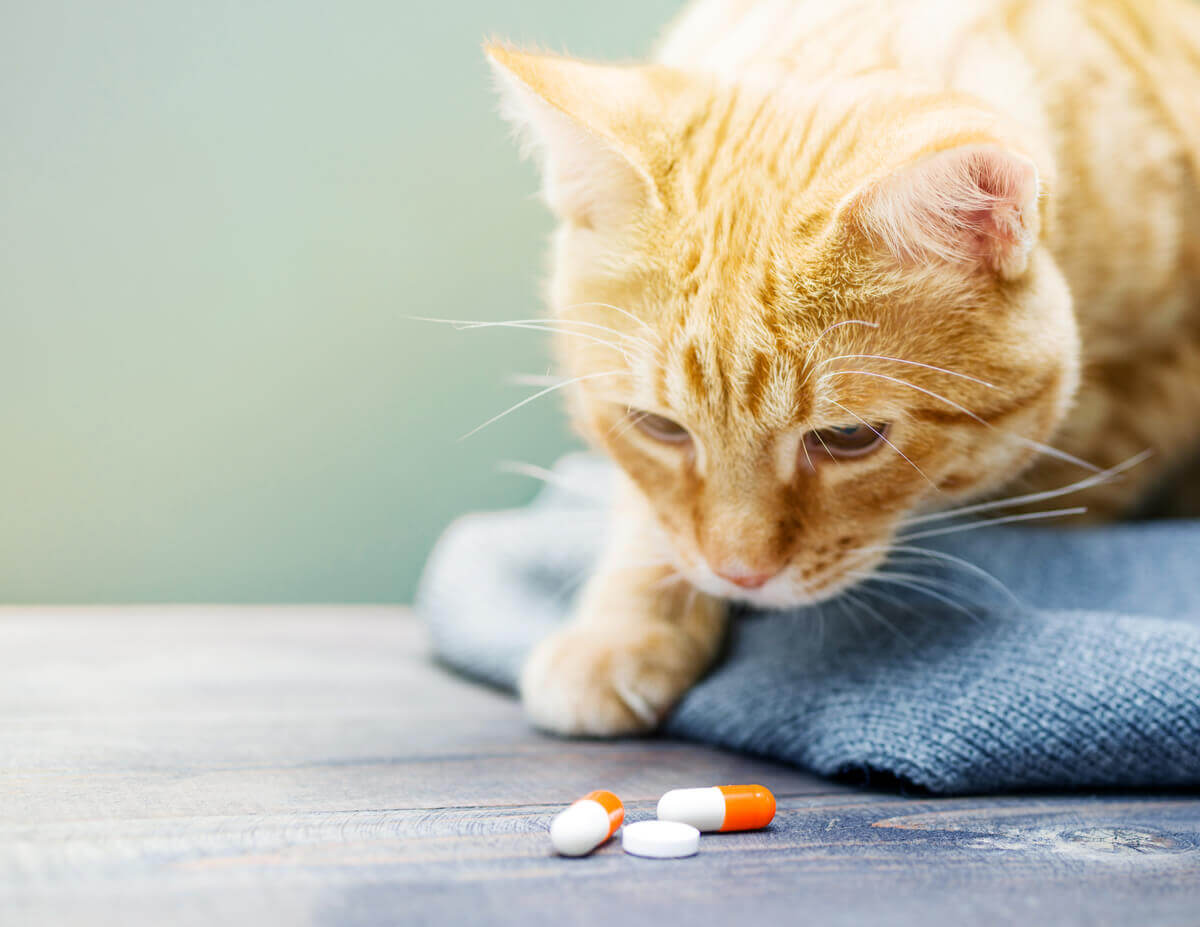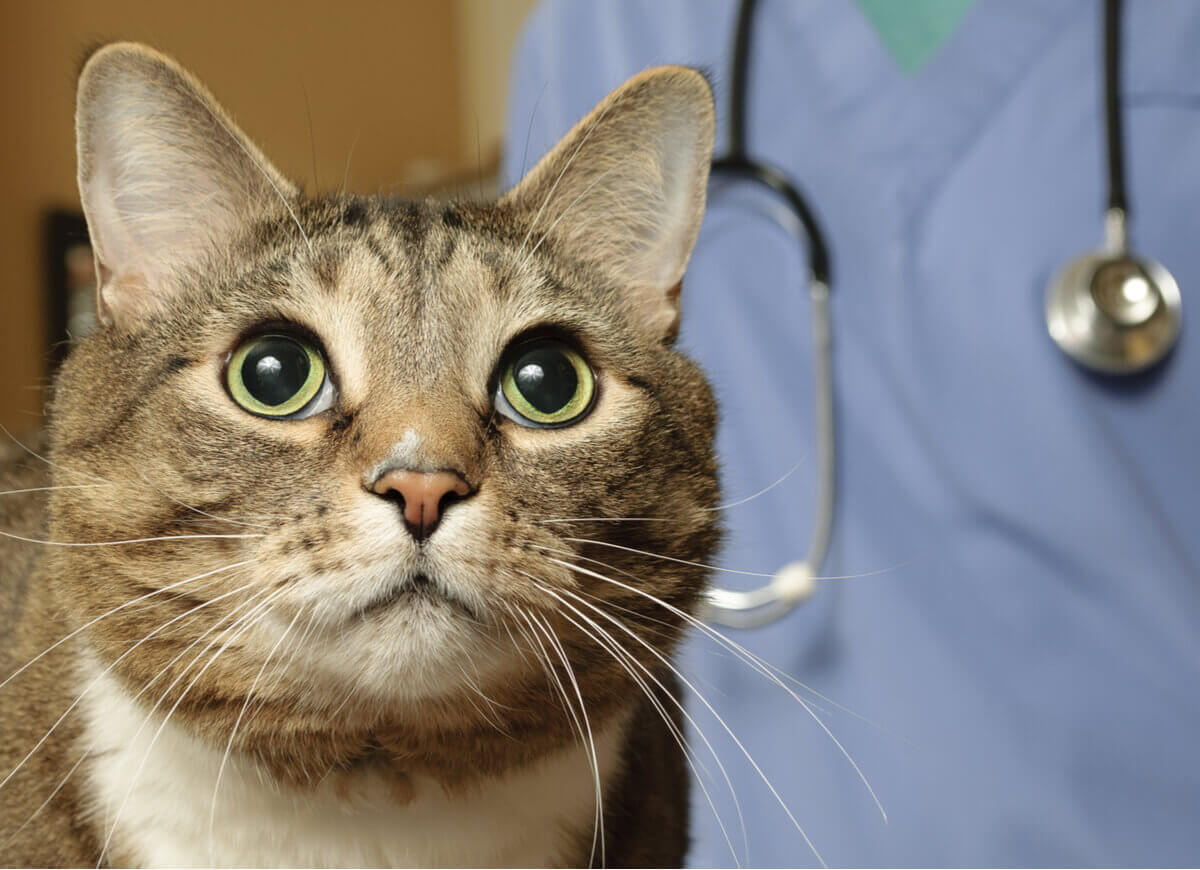Acromegaly in Cats: Symptoms and Treatment

Acromegaly is an endocrine disease consisting of hypersecretion of growth hormone (GH). The origin of this alteration in cats is the presence of a tumor in the pituitary gland. It’s a rare disease but, unfortunately, it can become quite serious. In the following article, we’ll tell you more about acromegaly in cats.
Normally, signs of acromegaly are detected by the presence of other diseases. In the case of cats, it may be due to insulin resistance in treatment for diabetes. Specialists confirm the definitive diagnosis through imaging and by measuring the levels of certain hormones in the blood.
Acromegaly in cats
Feline acromegaly has its origin in an adeno-hypophyseal lesion or an adenoma responsible for deregulation in the production of GH, the growth hormone. This is true for acromegaly in other species as well, except in the case of dogs.
The pituitary gland secretes the growth hormone thanks to the stimulation of another precursor hormone–somatocrinine–that the hypothalamus produces. The secretion of this hormone is inhibited by another hormone, somatostatin, which the hypothalamus also produces when GH concentrations are high.

Effects of growth hormone
Growth hormone has effects on the metabolism, since an excessive production of it affects the animal’s physiology. On the one hand, it stimulates liver glucose production, lipolysis, and increases lipid oxidation.
Because of this, an excess of the hormone results in persistent hyperglycemia. This, in turn, produces a state of hyperinsulinemia – a high presence of insulin in the blood – to counteract. Excessive concentrations of insulin lead to glucose intolerance. Therefore, insulin-resistant diabetes is a sign of acromegaly.
In addition, growth hormone is also secreted with the hormone IGF-1 (Insulin-like growth factor -1), which stimulates the proliferation of many tissues. Morphological changes are another sign of acromegaly: Organomegaly, deformation of the limbs, weight gain, and other characteristic symptoms.
Symptoms in cats
According to statistics, male cats of about 10 years of age are more prone to acromegaly. However, no differences have been observed between different cat breeds. Some of the most common symptoms are as follows:
- Insulin resistance associated with the usual signs of diabetes mellitus: Polyuria, polydipsia, changes in appetite and weight, and other events.
- Weight gain that the owner can’t explain.
- Cardiovascular symptoms: Acromegaly can develop into hypertrophic cardiomyopathy.
- Morphological changes: Abnormal enlargement of certain organs (organomegaly). Widening of the face is also common.
- Noisy breathing.
- Lower prognathism: The jaw seems to protrude from the mouth.
- Accelerated growth of the nails.
- Limping on one or more limbs.
- Nervousness or behavioral signs.
Is there a treatment for acromegaly in cats?
Currently, there are several types of treatment for cats with acromegaly. We’ll tell you all about them below.
Surgical treatment
The surgical treatment of acromegaly a pituitary gland removal. That is, the removal of the pituitary gland together with the tumor causing the acromegaly. It’s a complicated operation that only expert surgeons perform in highly specialized centers.
Due to the difficulty of the surgery itself, the state of the animal and the post-operative care it requires, it’s a risky procedure. However, it’s one that can have very good results.
In 2012, the Royal Veterinary College (RVC) in the UK performed the first successful hypophysectomy surgery to treat a cat with acromegaly. Today, in 2019, the most qualified professionals have performed more than 100 surgeries.
Radiotherapy treatment
This is the most common method for treating acromegaly in cats. Radiotherapy controls the extension of the tumor while reducing the need for insulin. However, this treatment doesn’t achieve normalization of growth hormone concentrations as is the case with hypophysectomy.
Furthermore, its lack of availability, costs, and the need for repeated anesthesia are a considerable drawback for the owners of sick cats. Again, highly specialized institutions are required to carry out this type of treatment.
Administration of drugs
This consists of the administration of somatostatin analogs and aims to decrease the insulin needs of treated cats. Parallel to this treatment, a specialist will monitor the size of the pituitary gland and control growth hormone concentrations.

If the cat’s owner decides not to follow any of the above treatments, they have the option of alleviating the symptoms. By administering high doses of insulin twice a day, it’s possible to manage acromegaly relatively effectively. Considering the amount of insulin this requires, it can be just as expensive as the previous ones.
In addition, combating insulin resistance is only an option when there are no nervous signs associated with the pituitary tumor. Also, cats should receive palliative treatment for the other symptoms that may arise from acromegaly.
“]
https://misanimales.com/acromegalia-gatos-sintomas-tratamientos/
All cited sources were thoroughly reviewed by our team to ensure their quality, reliability, currency, and validity. The bibliography of this article was considered reliable and of academic or scientific accuracy.
- Isabel Rodríguez Piñeiro, LV, PhD, Dip-ECVIM-Ca (Medicina Interna) Hospital Veterinario Puchol, Madrid. Dan Rosenberg LV, PhD MicenVet, Francia. Acromegalia Felina.
- Charles A. Hurty, Bente Flatland (2005): Feline Acromegaly: A Review of the Syndrome. In: Journal of the American Animal Hospital Association 41:292-297 (2005).
- AVEPA. Diagnóstico y tratamiento con radioterapia en una gata con acromegalia.